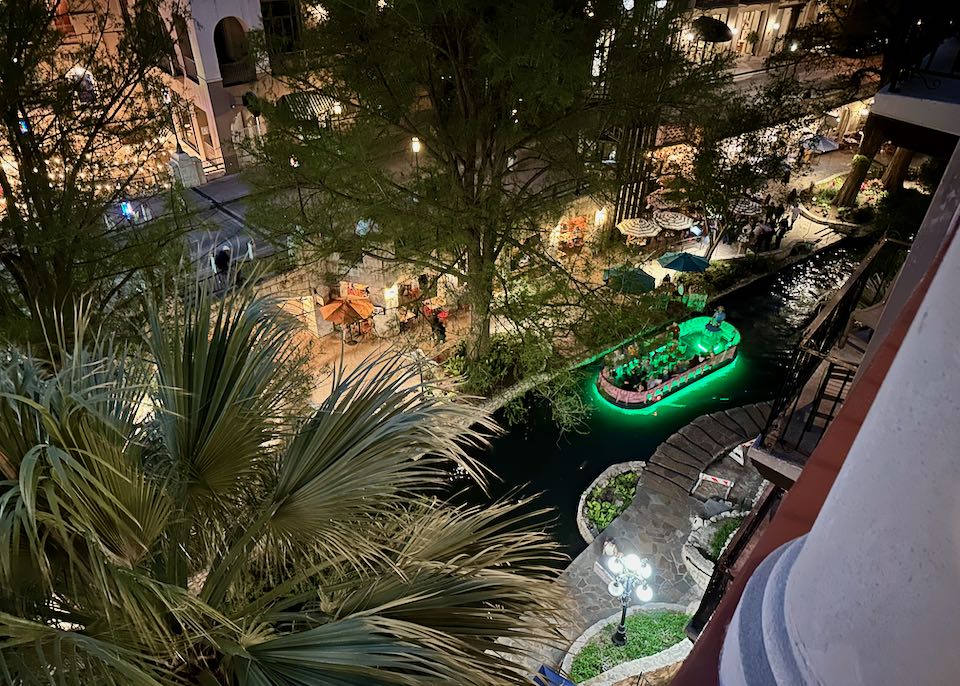
The view from our room at Omni La Mansión del Rio Hotel. Staying on or near River Walk in downtown San Antonio is best for first-time visitors.
Where to Stay in San Antonio, Texas
Founded in 1718 by Spanish missionaries, San Antonio is one of America’s oldest and biggest cities, with a complex history and a cluster of big attractions that includes SeaWorld, Six Flags Fiesta Texas, the San Antonio Zoo, the much loved River Walk through Downtown, and the Alamo. The latter chapel is the shrine-like location of the Battle of the Alamo in 1836, when General Santa Anna wiped out a band of Texas volunteers fighting for independence from Mexico – the city was only absorbed by the United States in 1845.
Today San Antonio remains quite apart from the other big cities in Texas. It lacks an oil-fueled skyscraper-downtown like Dallas and Houston, and is an overwhelmingly Hispanic city, with around 65 percent of the population claiming Hispanic or Latino identity. The Mexican border is just 2.5 hours away. It’s also a major military hub, the city center ringed by Lackland Air Force Base, Brooke Army Medical Center, Randolph Air Force Base, and Fort Sam Houston.
Most sights are located in Downtown San Antonio, a strollable area thanks in part to River Walk, the neighboring King William Historic District (south), and in Pearl/Broadway Corridor (north). Beyond here, the city is vast and sprawling, with other major attractions like SeaWorld more easily accessible by car.
In terms of accommodation, the main choice is whether to spend a little more to stay in or near Downtown, or to save money in one of the numerous motels and chain hotels that line the major highways and surround it. San Antonio is filled with indie motels offering rock-bottom rates, but the chains are usually safer, offer better quality, and are not much more expensive. If you can afford it, you’ll have a much better time staying in Downtown or the adjacent neighborhoods.
San Antonio does maintain a good (and cheap) bus network through VIA Metropolitan Transit, but if you aim to explore the greater metro area (or stay in a motel on a highway), it’s a lot more convenient to rent a car. If you’re going to be staying primarily in Downtown, though, there’s no need for one; driving here can be stressful and parking is expensive.
My wife and I on the San Antonio Riverwalk.
• San Antonio International Airport is around 10 miles north of Downtown, on the I-410 loop that encircles most of the city center. VIA bus route 5 gets to Downtown in around 30 minutes ($1.30). Taxis charge around $24–29 for the Downtown area. All the major car-rental agencies have counters at the airport.
• San Antonio BCycle is the city’s bike share program, with pedal-assisted e-bikes available via app (non-members pay $5 for 30min). Cycling around the city center is fairy easy, assuming it’s not too hot.
• Note that summers can be very hot in San Antonio; July and August both post average highs of 95°F (35°C). Conversely, winters can be surprisingly cold – it sometimes snows in January. The city is also prone to flooding (spring and summer).
• For more info, visit the official San Antonio website.
We’ve covered our favorite neighborhoods to visit and stay in more detail below, but with more time, these districts are also worth checking out:
• Eastside: You might visit Eastside San Antonio to catch the NBA’s San Antonio Spurs at the AT&T Center, which also serves as a major concert venue. There are plenty of cheap motels within a short drive of the stadium, but none of them are especially good – you’re better off getting a taxi from Downtown.
• Northeast: The chief attraction in Northeast San Antonio is the family-friendly theme park Morgan’s Wonderland, with enough entertainment to fill a whole day at least, including a new water park, Morgan’s Inspiration Island. There’s also the Texas Transportation Museum, which displays old cars and trains. You’ll find the usual spread of cheap motels along I-35 and I-410 up here, with La Quinta Inn & Suites Alamo City and Best Western Garden Inn (I-35) as decent options.
• North Central: This is another sprawling outer area best known for its family-friendly attractions, notably Six Flags Fiesta Texas, a huge theme park. The upscale Shops at La Cantera are conveniently located nearby, and kids will also love Andretti Karting and Games. The moving Holocaust Memorial Museum of San Antonio is also up here. There are quite a few upscale hotels in this part of the city, though it’s not really convenient for exploring Downtown. The best are La Cantera Resort & Spa, DoubleTree San Antonio Northwest, Eilan Hotel And Spa, Embassy Suites Landmark, WaterWalk at The Rim, and the JW Marriott Hill Country Resort & Spa a bit further out.
Best Places to Stay in San Antonio
Our room at the Mokara Hotel & Spa, the best hotel on the Riverwalk.
- Best Luxury Hotels in San Antonio
La Cantera Resort & Spa • Drury Plaza Riverwalk • Eilan Hotel And Spa • Hotel Emma • JW Marriott Hill Country Resort & Spa • Mokara Hotel & Spa • Thompson Riverwalk • The St. Anthony • Emily Morgan Hotel- Best B&Bs in San Antonio
Brackenridge House Bed and Breakfast • Inn on the Riverwalk • A Yellow Rose Bed and Breakfast • Bullis House Inn • O’Casey’s Boutique Inn- Best Cheap & Mid-range Hotels in San Antonio
Hampton Inn Downtown • Hotel Gibbs Downtown Riverwalk • La Quinta Inn & Suites DowntownBest Neighborhoods in San Antonio for…
- Best Neighborhood to Stay for First Timers/Sightseeing: Downtown San Antonio
Though it can be pricey, staying in Downtown makes the most sense for first-time visitors, especially those without the use of a car. Some of the biggest sights are within walking distance here – the Alamo, HemisFair Park, La Villita, the Briscoe Western Art Museum, SEA LIFE San Antonio, the Buckhorn Saloon & Museum, and River Walk itself. Strolling back to your hotel along River Walk at night is one of the pleasures of San Antonio, and though hotels set right on the river tend to be very expensive, there are affordable options nearby (especially around Market Square on the west side of Downtown).- Most Romantic Neighborhood: Downtown (River Walk)
It’s hard to beat a stroll along River Walk under a moonlit sky for romance, and there are plenty of classy restaurants and hotels perched along the water ideal for couples. The Selena Bridge, named after the Tejano singer who died tragically young, and the Kallison Love Lock Walk Bridge are especially romantic spots. Hit the Mokara Spa (at the Mokara Hotel), or go shopping at Market Square. Marriage Island, a tiny islet in the river connected to River Walk by a small bridge (it is sort of heart-shaped), is a popular spot to get married or pop the question. You’ll find it on the stretch between Navarro Street and Presa Street.The pool at the Omni La Mansión del Rio Hotel.
- Best Neighborhoods for Nightlife: Downtown and Southtown
Downtown San Antonio, especially around River Walk, is always good for bars, with local stalwarts such as Durty Nelly’s Irish Pub, Esquire Tavern, and Bier Garten Riverwalk. We also like the SoHo Wine & Martini Bar (in the Mokara Hotel & Spa) for cocktails, as well as Haunt in the Anthony Hotel, and the historic bar in the Menger. Live theater and music is provided by the Majestic Theatre and the Tobin Center for the Performing Arts. Clubs such as Bonham Exchange can also be found Downtown, while Southtown’s South Alamo Street is another nightlife hub. Highlights include the margaritas at Rosario’s and Bar 1919 for classic cocktails. There are also some good craft breweries, including Blue Star Brewing Company, Dos Sirenos Brewing, Künstler Brewing, and Dorćol Distilling & Brewing Co.• If you have a car, you’ll be able to check out the historic rural dance halls in the nearby Hill Country, like Gruene Hall in New Braunfels (35 miles northeast from Downtown San Antonio).
- Best Neighborhood for Food and Restaurants: Pearl/Broadway Cultural Corridor and Alamo Heights
San Antonio is famed as the home of Tex-Mex cuisine, but there’s a lot more to enjoy. Foodies should head for the Pearl/Broadway Cultural Corridor north of Downtown. The Pearl complex is especially good, serving as the apex for fashionable dining in the city (it’s also the home of the Culinary Institute of America’s third campus). Not to be missed are the stalls inside the Food Hall at Bottling Department, charcuterie specialist Cured, the Belgian wheat beer and bar food at Southerleigh Fine Food And Brewery, and classic Tex-Mex at La Gloria. Over on St Mary’s Strip, don’t miss Singhs Vietnamese (2803 N St Mary’s St), while the Broadway Corridor features the Alamo BBQ Company. Southtown is another great place to eat, though we also like trawling Broadway and Alamo Heights; sample the fish tacos at Beto’s, contemporary Mexican at Paloma Blanca, sweet treats at Bird Bakery, coffee at Merit Coffee, Thai food at Tong’s Thai, and brunch at Cappy’s.- Best Neighborhood for Shopping: Downtown
Downtown San Antonio provides a convenient and fairly extensive shopping experience, with malls such as the Shops at Rivercenter and Market Square within walking distance of River Walk, in addition to the touristy arts and crafts stores in La Villita Historic Arts Village. If you have more time and want to escape the tourists, seek out the more independent, locally-owned boutiques in Alamo Heights and Pearl (Broadway), or the vintage and consignment stores in Olmos Park (McCullough Avenue). For a more high-end experience, try the The Shops at La Cantera in North Central San Antonio.- Best Neighborhood for Local Vibe: Westside
The Westside is where San Antonio’s famed Tex-Mex cuisine emerged in the early 20th century, and though it’s a sprawling, primarily residential neighborhood, it’s also an excellent place to lose the tourists and mingle with local Texans. Colorful murals adorn the neighborhood thanks to organizations like San Anto Cultural Arts, while the Deco District on Fredericksburg Road features numerous buildings sporting the namesake Art Deco architecture. Highlights of the neighborhood, which is best explored by car, include Barrio Barista Coffee, home of the original horchata latte, the puffy tacos at Ray’s Drive In, the local branch of Delicious Tamales, shows at Woodlawn Theatre, and Janie’s Record Shop at 1012 Bandera Road, for n rare selection of vinyl.• Though there are cheap motels scattered across the neighborhood, you are better off visiting from elsewhere – various buses cut across the area from Downtown.
- Unsafe Areas of San Antonio
Downtown San Antonio (especially River Walk) is generally quite safe, though the usual precautions should be taken at night. The highest crime rates tend to be posted in Eastside neighborhoods such as Wheatley Heights, Denver Heights, and Eastwood Village, but you are unlikely to end up in these areas.The 6 Best Neighborhoods in San Antonio for Tourists
1. Downtown San Antonio (River Walk)
The Westin Riverwalk.
Almost everything you’ll want to see lies in Downtown, made eminently enjoyable to get around thanks to River Walk. Beginning in 1939, the San Antonio River in the heart of the city was landscaped and developed solely for pedestrians, and is now laced with walkways, restaurants, shops, and attractions. It sometimes feels that everyone, visitor and local alike, is here, so much so that when you venture out onto the streets above the river, the contrast can be jarring. At the eastern end lies the huge HemisFair Park, where you’ll find the enlightening UTSA Institute of Texan Cultures, the touristy 750ft-tall Tower of the Americas with its birds-eye views of the city, and the children-oriented Magik Theatre. On River Walk across from HemisFair Park, La Villita (“Little Town”) was the site of San Antonio’s original settlement, now a collection of touristy craft shops. On the north side of the river there are the excellent Briscoe Western Art Museum along with the family-friendly LEGOLAND Discovery Center and SEA LIFE San Antonio aquarium.
Just north of here is the Alamo itself, one of the most revered sites in America. It’s actually relatively small, with the old Spanish chapel now a monument to its doomed defenders and adventurers like Davy Crockett and Jim Bowie. Not far away, the fun Buckhorn Saloon & Museum dates back to the 1880s and is now a Old West-themed bar, restaurant, and store. On the west side of River Walk lies the old Main Plaza and grand San Fernando Cathedral, dating back to the 1730s.
- Each Tuesday, Friday, Saturday, and Sunday evening through 2024, you can watch a free 24-minute light show by French artist Xavier de Richemont – dubbed “The Saga” – on the exterior walls of San Fernando Cathedral, dramatizing San Antonio’s history.
- A popular way to take in the River Walk is by boat: GO RIO cruises operates a series of narrated river cruises plus scheduled river shuttles.
- Best Hotels:
Drury Plaza Riverwalk • Grand Hyatt River Walk • Hotel Havana • Mokara Hotel & Spa • Omni La Mansión del Rio • Marriott Rivercenter • The St. Anthony • Thompson Riverwalk • Westin Riverwalk- Best B&B:
Inn on the Riverwalk- Best Cheap/Midrange Hotels:
Hilton Palacio del Rio • Hampton Inn Downtown • Hotel Gibbs Downtown Riverwalk • Hotel Indigo Riverwalk • La Quinta Inn & Suites Downtown2. King William/Southtown the Arts District
Just south of Downtown proper on South Alamo Street lies Southtown the Arts District, which itself melts into the 25-block King William Historic District towards the river. With tree-lined streets featuring the elegant late 19th-century homes of German merchants (it was named in honor of King Wilhelm I of Prussia), it’s been transformed into an attractive neighborhood of bars, coffee shops, boutiques, museums, and art galleries. The Blue Star Arts Complex anchors the southern end of the district, with a contemporary art space, arts venues, shops, and studios – plus Blue Star Brewing Company. This is also where the area’s First Friday and Second Saturday artwalks get going. Take a peek inside Edward Steves Homestead Museum to get an idea of what life was like here in the Victorian era, or visit the ornate Villa Finale. There’s also the San Antonio Art League and Museum and Guenther House, built in 1876 and now an atmospheric restaurant. A newer attraction is the raspberry-hued Ruby City, designed by architect David Adjaye and home to a thought-provoking collection of contemporary art.
- The only recommended accommodation options here are bed and breakfasts – some of the best in the city, housed in gorgeous old Victorians. Otherwise, Downtown is a short walk or ride away.
- Best Hotels:
Brackenridge House Bed and Breakfast • Jackson House • A Yellow Rose Bed and Breakfast • The Oge House3. Pearl/Broadway Cultural Corridor
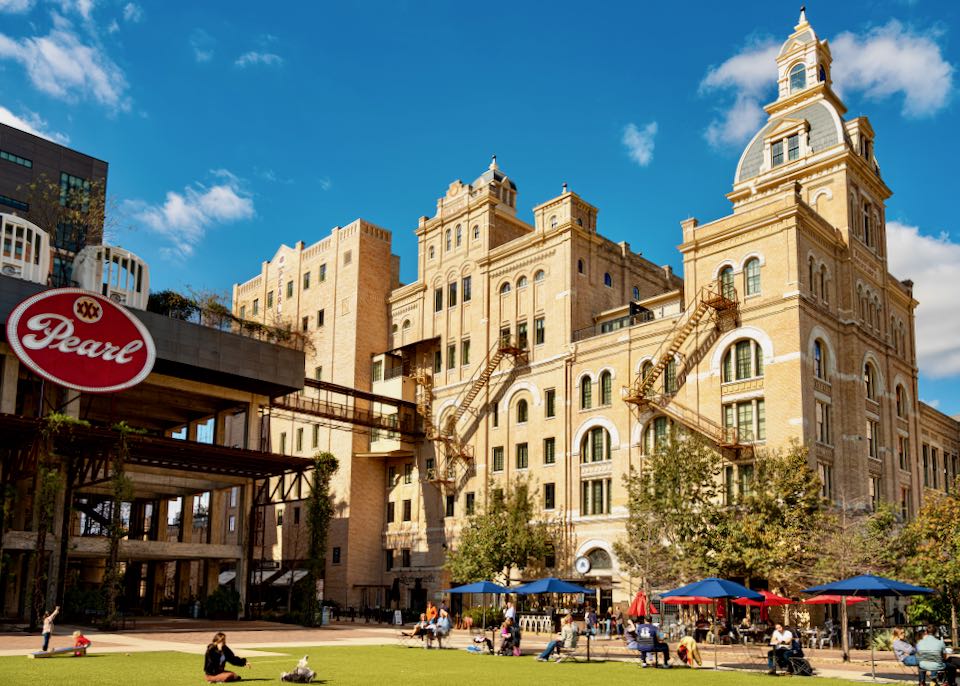
The Pearl Brewery and the Hotel Emma.
North of Downtown, proper pathways continue along the San Antonio River (aka the Museum Reach) into what’s known as the Pearl, a complex of shops, restaurants, and galleries carved out of what was a brewery founded in the 1880s (originally the San Antonio Brewing Association). On the way you’ll pass the San Antonio Museum of Art, best known for its ancient Greek, Roman, and Egyptian art collections. Just north of here, a colony of roughly 60,000 Mexican free-tailed bats reside under the I-35 bridge – between April and October their evening departure makes quite a spectacle. North of Pearl you’ll pass the DoSeum children’s museum and Brackenridge Park – home to the San Antonio Zoo, the amusements at Kiddie Park, and the Japanese Tea Garden. Nearby, the Witte Museum is known for its dinosaur exhibits, while San Antonio Botanical Garden features a grand glass conservatory and monumental sculptures. The Witte lies at the heart of the Broadway Cultural Corridor, lined with restaurants and bars, while the St. Mary’s Strip (to the west, along North St Mary’s Street) is another a hub of nightlife, food, and entertainment.
- The main accommodation option here is the expensive but luxurious Hotel Emma – stop by for a drink or snack if you’re not staying. Otherwise we’ve also included several bed & breakfasts tucked away in the residential areas west of the neighborhood.
- Best Hotels:
Hotel Emma • Bonner Gardens Bed & Breakfast • Bullis House Inn • O’Casey’s Boutique Inn4. Alamo Heights
Further north, Broadway anchors the hip Alamo Heights neighborhood. There are some great restaurants, boutiques, and coffee shops here, but the main attraction is McNay Art Museum, which holds some 22,000 modern and contemporary artworks from superb French Post-Impressionist painters (Gauguin, Picasso, and the like) to Diego Rivera, Georgia O’Keeffe, and Edward Hopper. You can also birdwatch at Judson Nature Trails, bike or hike through the adjacent Olmos Basin Park, or shop at Alamo Quarry Market mall.
- There’s little in the way of accommodation in the heart of Alamo Heights, though there are apartment rentals available as well as a cluster of cheap motels and hotels to the north near the airport, along I-410/US-210.
- Best Hotels:
Hyatt Place Airport/Quarry Market • Sands Motel- Best Hotels near San Antonio International Airport:
Drury Plaza Airport • Estancia del Norte • Holiday Inn Express Airport • Pear Tree Inn Airport • TownePlace Suites Airport5. Northwest San Antonio
The sprawling suburbs of Northwest San Antonio are best known for its popular outpost of SeaWorld, along with the associated Aquatica San Antonio water park. The family-fun continues at the San Antonio Aquarium, which features ring-tailed and red ruffed lemurs in addition to stingrays, sharks, iguanas, tortoises, and lorikeet. Northwest also features a Main Event San Antonio amusement center, the Alamo Ranch open-air shopping center, Hill Country Golf Club, and on its outer fringes, over 40 miles of hiking and biking trails at the Government Canyon State Natural Area.
- Northwest San Antonio is a good option for families, with cheap motels and chains lining the main highways – you’ll need a car to get around. The Hyatt Regency Hill Country Resort and Spa features lots of amenities, from pools and lazy rivers to golf.
- Best Hotels:
Hampton Inn & Suites Lackland AFB SeaWorld • Holiday Inn Seaworld • Hyatt Regency Hill Country Resort and Spa • Staybridge Suites Sea World • TownePlace Suites Westover Hills- Best Cheap/Midrange Hotels:
Best Western Ingram Park Inn • Fairfield Inn & Suites SeaWorld/Westover Hills • La Quinta Inn & Suites Seaworld/LAFB • WoodSpring Suites Lackland6. Missions/South San Antonio
South San Antonio, especially the area along the San Antonio River, is one of the most historically rich regions in Texas. The San Antonio Missions National Historical Park comprises four 18th-century Spanish colonial missions, with the primary Visitor Center at Mission San José. To the north lies Mission Concepción, while to the south are Mission San Juan and Mission Espada, the first Franciscan mission founded in Texas, back in 1690 (though the church wasn’t completed on the current site until 1756). Pathways (known collectively as the Mission Reach Trail) connect all four missions, making for a tranquil afternoon of hiking (assuming it’s not too hot). Elsewhere there’s more birdwatching at the Mitchell Lake Audubon Center and vintage aircraft at the Texas Air Museum at Stinson Field.
- Mexican food is especially good in South San Antonio: Nicha’s (3119 Roosevelt Avenue), Don Pedro, Rolando’s Super Taco (93 Shasta Ave), and Claudia’s Restaurant (1305 Pleasanton Rd) are all solid bets.
- Cheap motels are spread out all over South San Antonio, but standards tend to be low and many institutions serve as long-term accommodation. We’ve recommended some of the better options lining the main highways nearby (I-410, I-37, I-35).
- Best Hotels:
Embassy Suites Brooks City Base Hotel & Spa • Fairfield Inn & Suites Brooks City Base • Hampton Inn & Suites Brooks City Base • Holiday Inn Express & Suites South- Best Cheap/Midrange Hotels:
Best Western Plus Palo Alto Inn & Suites • La Quinta Inn Brooks City Base
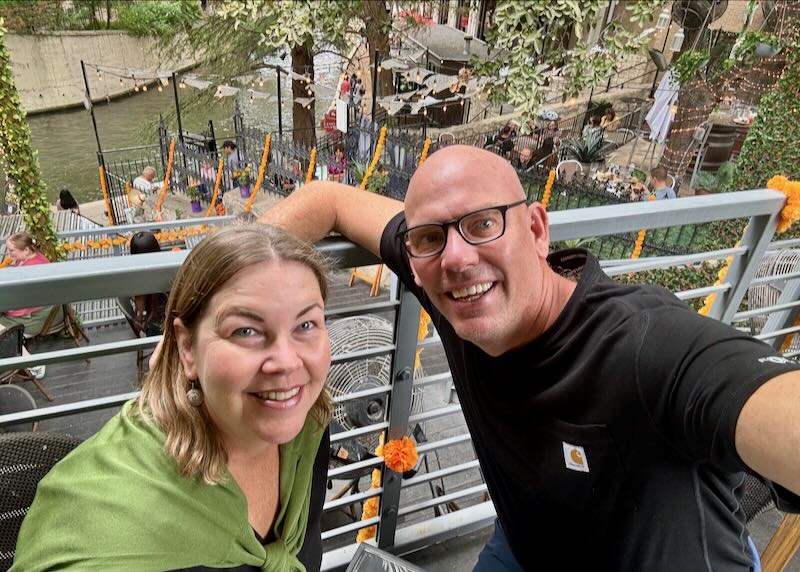
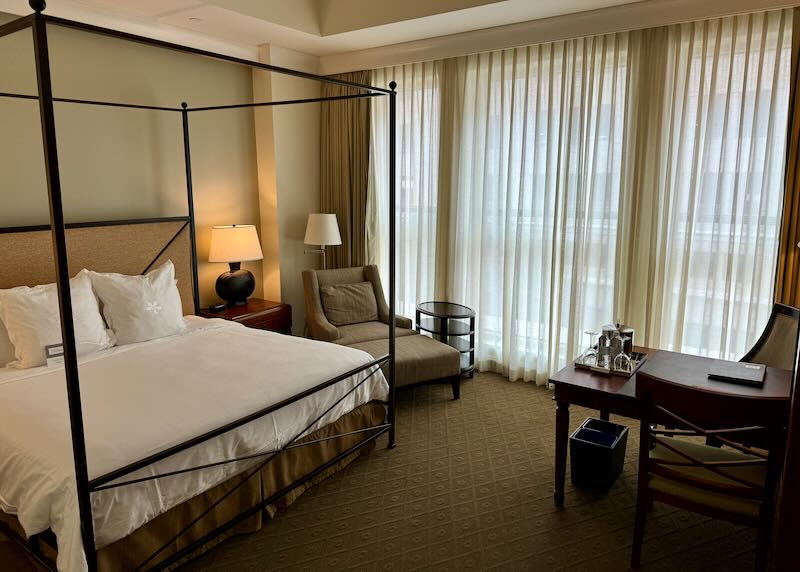
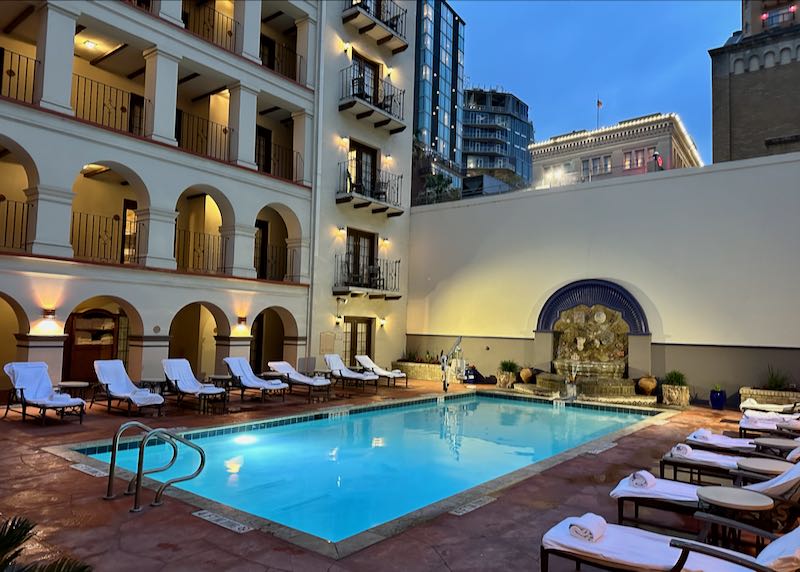
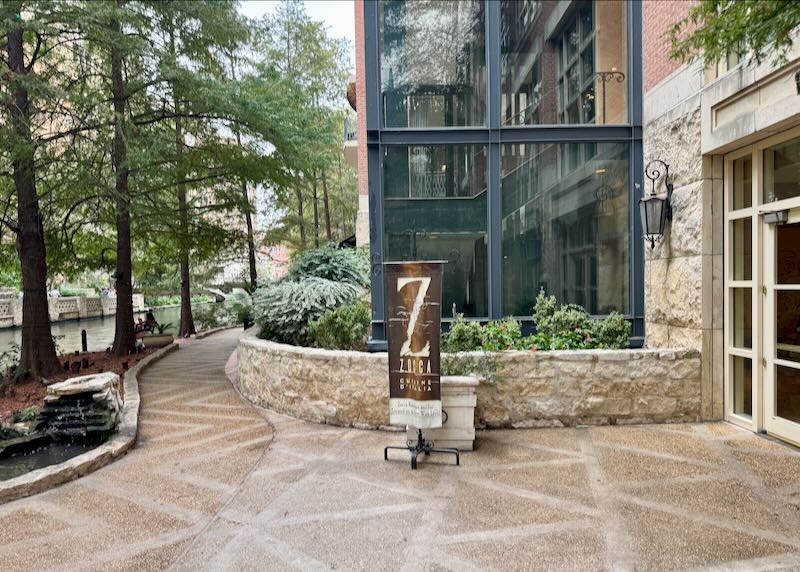
About Santorini Dave